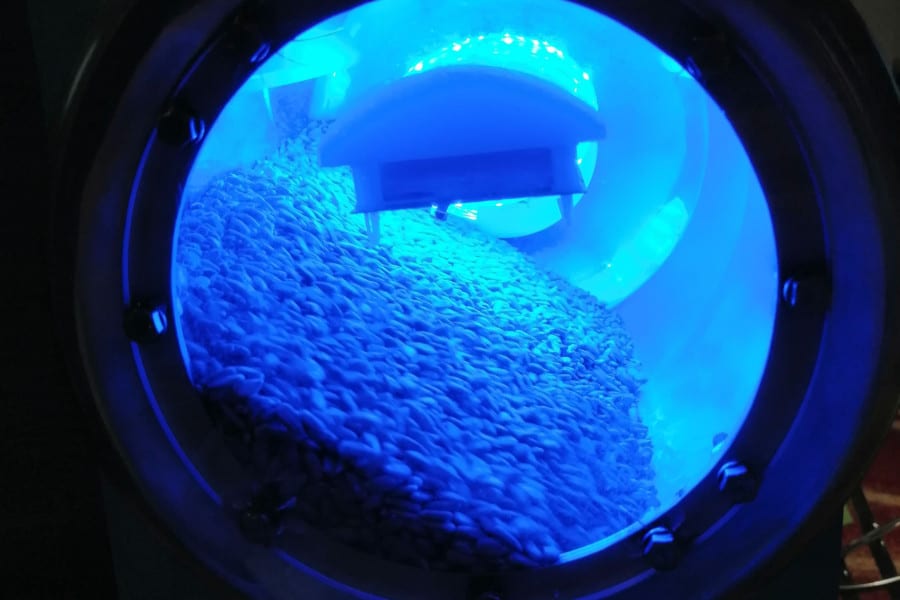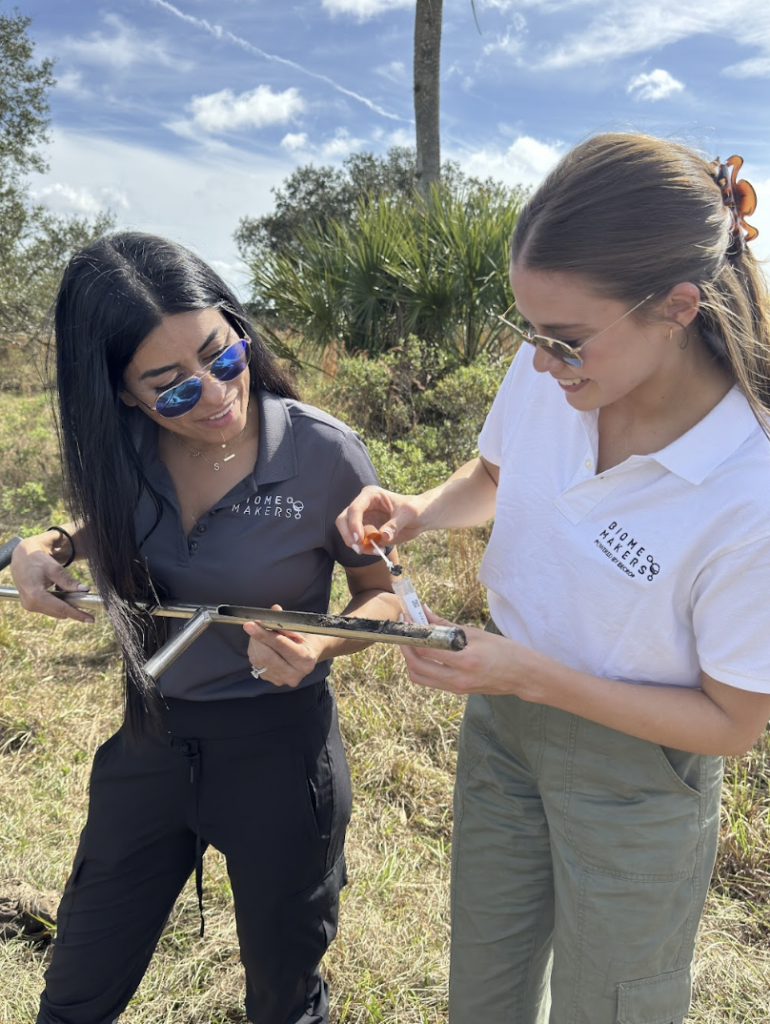Around 2,500 delegates attended the World AgriTech Innovation Summit in San Francisco in March. Mike Abram went along to hear about some new exciting innovations.
If you’re the CEO or founder of an agritech start-up, or looking to find such companies, it’s the place to be. If you’re the global head of sustainability or digital agriculture for a global food brand, retailer, machinery or ag input manufacturer it’s also a more-than-useful event to be seen and perhaps heard.
If you’re a farmer, it’s probably not even on your radar, at least based on attendance lists, although any farmer interested in new tech will find a huge amount to be interested in. The price of entry might put you off though.
The place is San Francisco in March, where the largest of five World AgriTech Innovation Summits around the world takes place.
Around 2,500 attendees meet for an event that is a mix of conference – panel sessions discussing topics such as regenerative agriculture, artificial intelligence, new breeding techniques and future of agtech funding – and exhibition both for established agtech companies and start-ups looking to tell the world about their big idea and hopefully encourage new investment to help make it a reality.
Among those firms was Crop Diagnostix, which is attempting to bring crop intelligence to a new level by analysing hole punch size leaf samples to understand plant health.
But unlike more traditional plant health tests, which rely on visual symptoms for diagnosis or tissue tests that could give inconsistent results, Crop Diagnostix analyses the plant leaf’s RNA to reveal the plant’s gene expression, CEO Brandon Chi explained.
“We help plants communicate with farmers and agronomists,” he said. “The power of gene expression is that genes within the plant are turning on and off in response to environment constantly.
“A plant can look green and healthy but be feeling some signs of nutrient deficiency or starvation. Through gene expression we can look at all facets of plant health at the earliest possible stage and because we don’t need visual symptoms to make a diagnosis, we can see that at a much earlier stage,” he said.

For example, in corn, growers could start to understand plant health from the V2 to V3 stage rather than V5 or later. “This gives the farmer weeks of actionability in advance compared with other technologies.”
Once the leaf RNA is analysed, Crop Diagnostix uses machine learning to mine through gene expression data to understand which genes are switched on or off to figure out what’s happening in the plant.
That could help answer questions around nutrient stress or even whether a plant was able to reach maximum yield potential based on the current gene expression, Brandon suggested.
With an infinite number of possibilities for the technology, Crop Diagnostix is initially concentrating on helping growers with nitrogen applications and other nutrient deficiencies in corn, after the initial research by co-founder Joseph Swift for his PhD found biomarkers that could predict yield and nutrient stress based on genetic expression in rice.
“We hope to launch a commercial product in 2025, and then rapidly scale up for 2026,” Brandon said. Samples will cost around $20 (£16)compared with $30-60 for a spectroscopy sample, with the added benefit that it is non-destructive and it doesn’t matter which leaf is sampled.
Other areas of trials include club root in oilseed rape and fusarium in onion where the company is involved in trials in the UK.
“These are high pain point pathogens with long asymptomatic periods that growers aren’t able to detect early on.”
Another company providing crop intelligence to farmers is Taranis, which uses drones to capture crop imagery at submillimetre resolution to monitor fields through the entire season, complemented with data from satellite imagery.

Already a commercial offer covering millions of acres of corn, soybeans and cotton in the USA and Brazil, the company had more recently started providing a service to sugar beet and potato growers in Germany, with France likely to follow soon, CEO Opher Flohr told Tech Farmer.
“Our biggest differentiator, which I’m not aware of anyone else doing, is offering very high leaf level resolution at 0.3 mm/pixel.
“To give a little perspective we would be able to read your business card from the sky or see the spots on a ladybird. There’s no difference between that and a human being standing over a weed and looking with their own eyes.”
The same kind of resolution is possible using the firm’s proprietary imaging pod on a plane which has patented technology to fix the image in the same position even while the plane is flying at full speed.
“It uses mirrors, gyros and different lasers to take the same, perhaps even slightly better imaging than we can with off-the-shelf drones,” Opher said.
Once a grower has signed up for the service, which in the US costs around $13/ac (£26/ha) through an ag retailer, and provided field location, crop and planting date, Taranis automatically schedules all the drone or plane flights.
“We operate all the pilots,” Opher said. “Making sure the pilots arrive at the field at the right crop stage to deliver insight and value to the farmer, while building the right software and tools to optimise flight plans and image quality is a huge task, which is probably why we haven’t seen anyone else provide a service like this.”
As well as weed identification, Taranis also offers accurate, AI-powered insights into plant stands – extremely useful to help provide precise information about replanting decisions that can provide a large return on investment – and disease, pest and nutrition insights.

Soils are, not surprisingly, a big growth area for investment in agtech with new ideas at the event aiming to potentially help farmers improve soil health or understanding and management of their key asset.
Mexican/American biotech start-up Solena is using its AI-driven Prometheus platform to analyse and compare the functions of microbes from two different performing areas of a field or farm, for example the highest and lowest yielding parts.
“All farmers know what the best or worst performing areas on a farm are,” chief financial officer Gerardo Guerrero told Tech Farmer. “So if the seed is the same, the climate, the irrigation system, the difference is in the microbiome.”
That information can then be used to recommend how to improve the poorer performing areas with customised inputs, including dose and timing, based on the soil microbiome.
Initial use cases have concentrated on finding differences in pathogens to help target biological or chemical input use to boost crop performance, or, in the case of a potato project with PepsiCo in north Mexico to help growers identify when they don’t need to apply pesticides.
“We were able to reduce chemical applications by 30% compared with the previous season, while maintaining yields,” Gerardo said.
That kind of in-season analysis would help PepsiCo to drive regenerative agriculture adoption without losing productivity, he noted.
Californian-based Biome Makers is on a similar path with its soil microbiome analysis. Over the past 10 years the firm has analysed soils from six continents, 56 countries and over 200 crops to build a database of over 24m microorganisms, making it, according to Biome Makers, the largest database of soil data.
“What we do is decode soil biology to optimise farming practices and improve soil health,” explained Sarah Basiri, global head of marketing. “We extract microbial DNA from the soil, analyse it, and then using our BeCrop Technology, we analyse the functions of microorganisms to understand what is happening below ground.”

The results provide key agronomic insights, such as early disease detection, identification of beneficial microbes with positive impacts on pests or diseases, or ones that mobilise a whole range of nutrients, including nitrogen, phosphorus and potassium, as well as micronutrients.
It also helps farmers understand whether there are microbes present that are linked to withstanding stress conditions or promoting or regulating crop growth, such as auxins, cytokinins and gibberellins.
“Farmers and advisers can use these results to understand how management practices and ag inputs impact the soil microbiome,” Sarah said. “And we can also help advisers provide tailored recommendations and place the correct product based on these biological insights.”
A single introductory test cost $199 (£159), although buying the service through an ag retailer in the US brought the cost down to $3-9/acre (£6-18/ha), Sarah said.
Pluton Biosciences is also trying into tap into the world of microbes, but this time in pursuit of consortia of microbes that will solve particular challenges. “Why try to rediscover the wheel when you can search for microbes that are already doing what you’re looking for,” suggested Adam Blaszczak, Pluton Bioscience’s vice-president of R&D.
One of the first development products emerging from the micro-mining process undertaken by the firm was a microbial consortium that will capture carbon from the atmosphere, Adam told Tech Farmer.

The concept, which started as a collaboration with Bayer, is based on the observation that soil microbe pioneers in the desert can live off carbon and nitrogen from the atmosphere, forming a film of crust on the soil surface.
Pluton’s proof of concept research predicts the right grouping of microbes, applied in a spray at planting and harvest can scrub 1t/acre/year of CO₂e from the atmosphere to help address climate change while replenishing nutrients in the soil, potentially earning farmers carbon credits.
“The idea is they could be an alternative to cover crops, while also helping to reduce soil erosion and fertiliser requirements in following crops,” Adam said.
Field testing of the first generation was due this spring, while next generation development was already underway with the potential to add microbes that secreted a molecule that looked like coal to store carbon more permanently in the soil, he added.
Could next generation seed priming improve crop performance?
Both biostimulants and elicitors have had their fair share of challenges in gaining the trust of farmers, mostly because the performance of both has been inconsistent at best.
But two start-up companies at the World AgriTech Innovation Summit were suggesting that they had developed products that would change that perception.
UK-based start-up Zayndu uses cold plasma – a kind of ionised gas – to activate the air around seeds, explained CEO Ralph Weir.
“That improves seed health in a number of ways. Firstly, it kills off any pathogens that might be on the seed surface.
“It also removes the waxy layer that seeds are coated in, which is there to waterproof the seed. That’s counterintuitive when you think seeds need water to germinate.”

The plasma creates micro fissures on the seed surface which helps moisture get into seeds, with the combined effect of enabling the seed to germinate more quickly.
“Activating the air also re-arranges the nitrogen into nitrates and nitrites, which are noted for being fertilisers, and by also creating these little fissures, it enables the fertiliser to get close to the embryo,” Ralph said.
“Now the seeds have quick and easy access to water and fertiliser just as we are about to plant them.
“We also tweak the hormone balance in the seed a little bit, effectively saying it is your time to germinate – it removes any conservatism in the seed. A lot of seeds hold back energy when germinating in case of drought or other stress, but our technology is mostly designed for greenhouses or other controlled environments so you don’t need to worry about those things.
“The end result is quicker germination, and bigger, stronger seedlings and roots. And it turns out if you do that in the wild and there is a drought, it’s actually in a better place because of the stronger roots. We typically see something like 20% uplift in yields, or it allows a grower to hit spec size or weight more quickly – say in 20 days rather than 23 days in a greenhouse , which means you can do more cycles in a year.”
Zero Gravity Solutions, meanwhile, is using a plant priming platform originally developed for NASA to grow robust, nutrient-dense plants in hostile environments.
“We offer a next generation biostimulant technology,” CEO John McLean claimed. “It’s a product that allows plants to protect themselves.
“The way our product works is we developed a set of chemical elicitors that the plant perceives as a stress signal,” he explained.
That signal causes the plant to grow faster to get to the next generation by producing seed more quickly, and in some cases, depending on the nature of the stress signal, encourages the plant to produce antioxidant molecules which resist disease, he said.
“As climate becomes more variable in terms of temperature and water availability, it’s helpful for plants to be able to activate its natural defences. The plant can react to diseases and stresses but pre-priming acts like a vaccine, and allows the plant to respond quickly and aggressively to these kinds of stresses and challenges.”
Elicitors in the past had struggled with the natural conflict between energy used to produce defence mechanisms and the energy needed to produce yield, he said. “We’ve addressed both of those issues.
“Our elicitors are designed to activate a number of pathways simultaneously inside the plant, so you get a broader set of protections against disease. Secondly, we have been able to understand the mode of action sufficiently to optimise the balance between improving yield and fighting disease.”
While the main focus for the product is high value fruit and vegetable crops, the firm has also investigated row crops, such as soybeans and wheat. “We’ve exciting data on soybean rust showing we can reverse infections and recover yields, while in wheat trials in India that showed yield increases of 30% when using the elicitor in combination with fertiliser over fertiliser treated wheat alone.”




